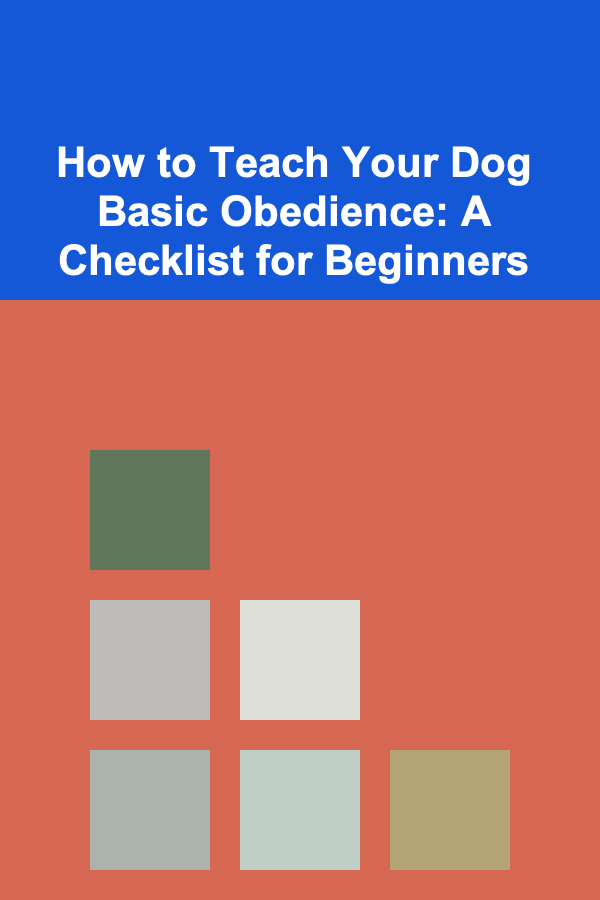
How to Create Engaging Content for Your Small Business Blog
ebook include PDF & Audio bundle (Micro Guide)
$12.99$11.99
Limited Time Offer! Order within the next:

In today's digital age, creating engaging content for your small business blog is one of the most effective ways to connect with your target audience, drive traffic to your website, and build a strong online presence. Content marketing is a vital strategy for growing your business, as it not only helps to engage your audience but also establishes your brand as an authority in your industry.
This comprehensive guide will walk you through the essentials of creating compelling, high-quality content for your small business blog. From understanding your audience to choosing the right topics and optimizing your content for search engines, we'll cover all aspects of crafting engaging blog posts that can resonate with your readers and drive results.
Understand Your Audience
Before you start writing, it's crucial to have a clear understanding of who your audience is. Creating engaging content that resonates with your readers starts with knowing their preferences, needs, and pain points. Here's how you can get a better understanding of your audience:
Define Your Ideal Customer
Consider creating buyer personas for your ideal customers. These are fictional representations of your target audience, including their demographics, interests, buying behavior, and challenges. For instance, if you're a small local coffee shop, your audience could be young professionals who are passionate about sustainable living or busy parents looking for quick and quality coffee options. The more detailed your persona, the easier it will be to tailor your content to their needs.
Analyze Customer Feedback
Customer reviews, surveys, and feedback can give you valuable insights into what your audience cares about. Pay attention to comments on social media, emails, or customer service interactions to identify common questions or concerns that you can address in your blog posts.
Research Competitors
Look at the content your competitors are producing. What topics are they covering? What tone are they using? Are they focusing on providing value, or are they mostly promoting their products? Analyzing competitor blogs can help you identify gaps in the market that you can fill with your own unique content.
Choose the Right Blog Topics
Once you understand your audience, the next step is to choose blog topics that will capture their attention. The topics you select should align with your audience's interests while also providing value. Here's how to choose the right topics:
Solve Problems
Your blog should focus on solving your audience's problems. If you can help your readers overcome challenges or answer their questions, your content will be highly engaging. For example, if you're a personal trainer with a small business, writing about common workout mistakes or nutrition tips will provide valuable insights to your readers, positioning you as an expert in your field.
Provide Educational Content
People love learning new things, and educational content tends to perform well in blog formats. Write how-to guides, tutorials, case studies, or industry insights. Educational blog posts not only drive traffic but also increase engagement as people are more likely to share useful and informative content.
Tap Into Trending Topics
Keeping an eye on industry trends can help you create relevant and timely content. If a new tool, technology, or trend is taking the industry by storm, writing about it allows you to tap into existing conversations. Trend-related content can position your blog as a valuable source of up-to-date information, driving more traffic to your site.
Use Content Ideas Generators
If you're struggling to come up with blog ideas, consider using content idea generators. Tools like BuzzSumo, Answer the Public, and Google Trends can help you identify popular search queries and blog topics. This can serve as inspiration and ensure that your content is aligned with current interests.
Craft Captivating Headlines
Your blog's headline is the first thing your audience will see, and it plays a significant role in whether or not they click on your post. An engaging headline should grab attention and provide a preview of the value your content will deliver.
Be Clear and Specific
Avoid vague or overly broad headlines. Instead, make your headlines specific to what the reader will gain from reading the post. For example, instead of "How to Improve Your Business," use "How to Improve Your Small Business Marketing with These 5 Simple Strategies." This gives the reader a clear understanding of what to expect.
Use Numbers and Lists
People love lists because they provide an easy-to-digest format. Including numbers in your headline, such as "10 Tips for Writing Better Blog Posts" or "5 Ways to Increase Website Traffic," can make your post more attractive. It promises a structured and actionable guide, which often appeals to readers.
Use Power Words
Certain words can spark curiosity or evoke strong emotions. Using power words like "ultimate," "essential," "secrets," and "proven" can make your headline more compelling. For example, "The Ultimate Guide to Small Business SEO" is more enticing than simply "SEO Tips for Small Businesses."
Write High-Quality, Valuable Content
Engaging content is not just about catchy headlines and trendy topics---it's also about providing value through well-written and informative posts. Here's how to write high-quality content that your readers will appreciate:
Keep It Simple and Clear
Your writing should be easy to understand. Avoid jargon or overly technical language unless you're addressing an audience that is familiar with it. Use short paragraphs, clear subheadings, and bullet points to break up the content and make it more scannable.
Tell a Story
People connect with stories. Weave storytelling into your blog posts to make them more relatable and engaging. For example, you could share a personal experience about how your small business overcame a significant challenge or how a customer benefited from your services. Storytelling creates emotional connections with your readers and makes your content memorable.
Use Visuals
Incorporate images, infographics, videos, or GIFs to complement your content. Visuals not only make your posts more engaging but also help to break up long chunks of text, making your posts easier to read. If you're discussing complex topics, consider creating diagrams or infographics to visually explain your points.
Stay Authentic
Authenticity is key to building trust with your audience. Be genuine in your tone and voice. People want to engage with real businesses and personalities, so avoid using overly formal language or sounding too sales-focused. Let your personality shine through your writing.
Keep It Actionable
Every blog post should leave your readers with something they can act on. Whether it's applying a new strategy, following a step-by-step guide, or simply gaining new insights, ensure that your content provides tangible takeaways.
Optimize for SEO
Search engine optimization (SEO) is essential for ensuring that your content is discoverable by search engines and reaches your target audience. Optimizing your blog posts for SEO can help increase your organic traffic, leading to more exposure for your small business.
Conduct Keyword Research
Use tools like Google Keyword Planner, Ahrefs, or SEMrush to find relevant keywords for your blog topics. Focus on long-tail keywords that reflect specific search queries your target audience is likely to use. For instance, "how to improve local SEO for small businesses" would be more effective than just "SEO tips."
Include Keywords Naturally
Once you've identified the right keywords, include them naturally throughout your post. Make sure the primary keyword appears in your headline, subheadings, and within the first 100 words of your content. However, avoid keyword stuffing, as this can negatively impact your SEO and make your content sound unnatural.
Use Internal and External Links
Link to other relevant blog posts or pages on your website (internal links), as well as to authoritative external websites. Internal links help with navigation and SEO, while external links show that you're providing well-researched content.
Optimize Images
Ensure that all images on your blog are optimized for SEO by including alt text and using descriptive filenames. This helps search engines understand the content of the images and improves the accessibility of your posts.
Focus on Mobile Optimization
A significant portion of web traffic comes from mobile devices, so make sure your blog is mobile-friendly. A responsive design ensures that your content looks great on all screen sizes and enhances the user experience.
Promote Your Blog Content
Creating great content is only half the battle. To truly engage your audience and grow your business, you need to promote your blog posts through various channels.
Share on Social Media
Promote your blog posts on your social media platforms. Customize your message for each platform (Facebook, Instagram, Twitter, LinkedIn) and use eye-catching images or excerpts from the post to entice your audience to click through and read more.
Use Email Marketing
Build an email list and send out newsletters featuring your latest blog posts. Personalize the emails to create a stronger connection with your readers and encourage them to visit your website. Offering exclusive content or promotions can increase open rates and engagement.
Collaborate with Influencers or Guest Bloggers
Partnering with influencers or guest bloggers can help amplify your reach. Look for individuals or businesses in your industry with an established audience who can promote your content. This is an effective way to get your blog in front of new, engaged readers.
Leverage Paid Advertising
If you have the budget, use paid advertising to promote your blog content. Google Ads and social media ads allow you to target specific audiences, driving traffic to your blog.
Measure Performance and Adjust
Once you've published and promoted your blog posts, it's essential to track their performance to see what's working and what isn't.
Use Analytics Tools
Google Analytics is a powerful tool that allows you to track website traffic, user behavior, and engagement metrics. Monitor how your blog posts are performing in terms of page views, bounce rates, and time on page.
Adjust Your Strategy
Based on your analytics, make adjustments to your content strategy. If certain types of posts are driving more traffic, consider producing more of that type of content. If you're noticing a high bounce rate on certain pages, rethink the structure or quality of those posts.
Conclusion
Creating engaging content for your small business blog is a continuous process of understanding your audience, choosing the right topics, and producing high-quality posts that provide real value. By focusing on your audience's needs, crafting compelling headlines, optimizing for SEO, and promoting your posts, you'll be able to attract more readers, engage your community, and ultimately grow your business. Remember, content is king, but consistency and authenticity are what will keep your readers coming back for more.
Reading More From Our Other Websites
- [Personal Finance Management 101] How to Save for Your Child's Future Without Sacrificing Your Goals
- [Personal Care Tips 101] How to Shave Your Legs with a Razor Without Cutting Yourself
- [Organization Tip 101] How to Create a Tranquil Wellness Space in Your Home
- [Organization Tip 101] How to Organize a Family Reunion for Seniors
- [Organization Tip 101] Common Mistakes to Avoid When Stripping Furniture
- [Personal Care Tips 101] How to Use Lip Balm for Lip Care on the Go
- [Toy Making Tip 101] Eco-Friendly Fun: Crafting Sustainable Toys with Recycled Materials
- [Reading Habit Tip 101] Best Reading Habit for Building a Richer Vocabulary & Improved Communication Skills
- [Personal Financial Planning 101] How to Consolidate Debt vs. Balance Transfer: Which Option Is Right for You?
- [Home Storage Solution 101] How to Store and Organize Holiday Gifts Before Wrapping

How to Designate Zones for Different Types of Workouts
Read More
How to Set a Realistic Budget for Your Dream Home
Read More
How to Use Yoga for Stress Management
Read More
How to Practice Digital Detox for Mental Health
Read More
How to Upholster Car Seats: A Step-by-Step Guide
Read More
How to Teach Your Dog Basic Obedience: A Checklist for Beginners
Read MoreOther Products

How to Designate Zones for Different Types of Workouts
Read More
How to Set a Realistic Budget for Your Dream Home
Read More
How to Use Yoga for Stress Management
Read More
How to Practice Digital Detox for Mental Health
Read More
How to Upholster Car Seats: A Step-by-Step Guide
Read More